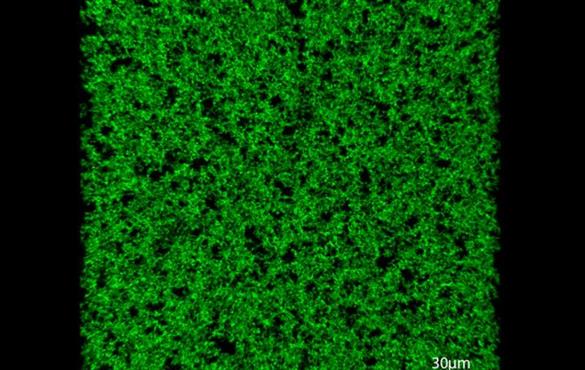Biomaterials with "Frankenstein Proteins" Help Heal Tissue
By injecting an artificial protein made from a solution of ordered and disordered segments, a solid scaffold forms in response to body heat, and in a few weeks seamlessly integrates into tissue

Biomedical engineers from Duke University and Washington University in St. Louis have demonstrated that, by injecting an artificial protein made from a solution of ordered and disordered segments, a solid scaffold forms in response to body heat, and in a few weeks seamlessly integrates into tissue.
The ability to combine these segments into proteins with unique properties will allow researchers to precisely control the properties of new biomaterials for applications in tissue engineering and regenerative medicine.
“Being able to simulate the molecular basis for tunable hysteresis puts us on the path to design bespoke materials with desired structures and shape memory profiles,” said Rohit Pappu, the Edwin H. Murty Professor of Engineering in the Department of Biomedical Engineering at Washington University in St. Louis. Pappu’s lab provided the computational modeling necessary for the project.
The ability to combine these segments into proteins with unique properties will allow researchers to precisely control the properties of new biomaterials for applications in tissue engineering and regenerative medicine.
“Being able to simulate the molecular basis for tunable hysteresis puts us on the path to design bespoke materials with desired structures and shape memory profiles,” said Rohit Pappu, the Edwin H. Murty Professor of Engineering in the Department of Biomedical Engineering at Washington University in St. Louis. Pappu’s lab provided the computational modeling necessary for the project.




